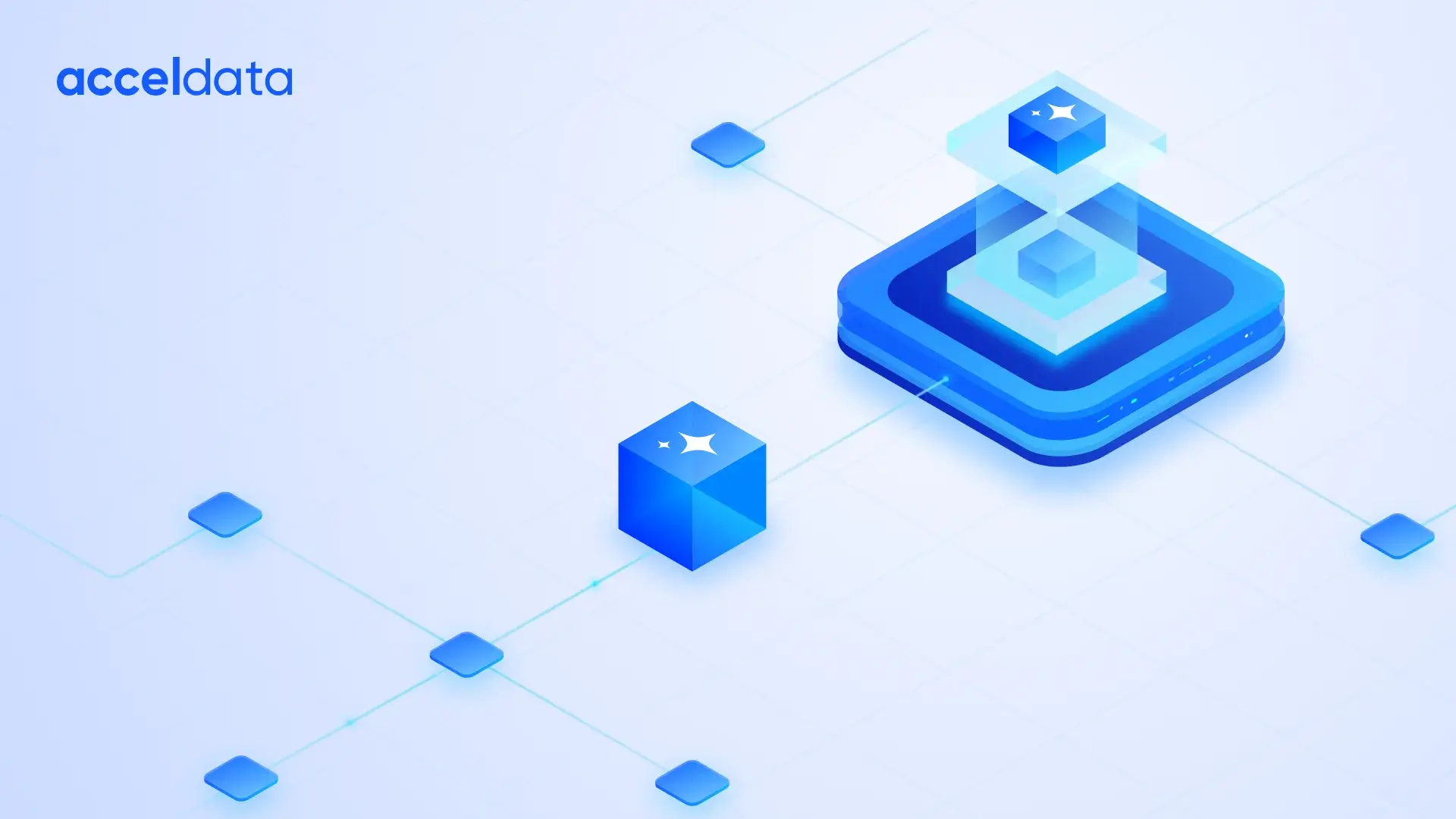In today’s climate of intense scrutiny over budgets and spending, it is crucial for data teams to keep a close eye on their cloud expenditures and ensure that there is correct accounting based on usage. The Acceldata Data Observability Platform offers a variety of unique cloud chargeback and budgeting features, and this functionality enables tracking, evaluation, and allocation of infrastructure costs across business units and data platforms.
These features give data teams far more control in managing costs for their cloud data environments, and help them navigate the increasingly complex nature of cross-organizational resource and spend allocation.
To understand these capabilities in context, we’ll look closely at the following elements of the Acceldata platform and how it impacts spend intelligence and cloud cost optimization:
- Chargeback: Acceldata’s chargeback feature enables the efficient allocation of funds to different business units within the organization based on previous spending records.
- Budgeting: With the budgeting feature of chargeback, you can establish budgets according to the specific needs of your organization.
Why Data Teams Need Better Visibility into Cloud Chargeback and Budgeting
Effective cloud chargeback and budgeting are crucial for data teams in today's technology landscape. As organizations increasingly leverage cloud infrastructure and services, understanding the costs associated with cloud usage is essential for optimizing resource allocation, managing budgets, and making informed decisions. Data teams, in particular, need better visibility into cloud chargeback and budgeting for several reasons.
Consider that teams often play a significant role in driving cloud adoption and usage within organizations. They rely on cloud services for data storage, processing, analytics, and machine learning, among other tasks. However, without clear visibility into the costs incurred by different data projects, it becomes challenging to accurately allocate expenses and track the return on investment (ROI) of cloud initiatives. Improved visibility allows data teams to align cloud usage with business goals, identify cost optimization opportunities, and ensure resources are allocated efficiently.
Additionally, data teams are responsible for managing complex data workflows and pipelines that span multiple cloud services and regions. These workflows involve data ingestion, transformation, analysis, and storage, each with its associated costs. By having better visibility into cloud chargeback and budgeting, data teams can monitor the cost implications of these workflows in real-time. This visibility enables them to identify cost drivers, optimize resource utilization, and proactively address any unexpected spikes or inefficiencies that may impact budget constraints.
Better visibility into cloud chargeback and budgeting empowers data teams to collaborate effectively with other stakeholders, such as finance and business units. With clear and transparent cost information, data teams can engage in meaningful discussions about resource allocation, prioritize projects based on their financial impact, and establish effective governance mechanisms. This collaborative approach ensures that cloud investments are aligned with business objectives and that budgets are managed efficiently across the organization.
Understanding Chargeback in Acceldata
In order to utilize the Acceldata cloud chargeback feature, it is necessary to comprehend its various components. These include the Organization Unit (OU), the Cost Center (CC), and the Scope.
An OU represents a department within the organization, such as Engineering, Sales, or Marketing, and can be used to establish hierarchies between departments. Each OU incurs expenses associated with tasks it must accomplish. For instance, the Engineering OU may have expenses such as data platform costs (AWS, GCP, Snowflake), database licensing costs (Oracle DB, MS SQL), and so on.

A CC represents a project that consumes various resources of the data platform and is associated with an OU. A single OU can have multiple CCs. For example, the Engineering OU may have production, development, and staging environments as its CCs, as each of these consumes resources like databases and data platforms. However, CCs can also exist independently and may not necessarily be associated with an OU.
A Scope is a logical grouping of resources that offers a customized view of those resources. Every CC is linked with a Scope, and resources are grouped together under a single Scope. There are several ways to define a Scope within Acceldata. One method involves assigning an entire account to a single CC, such as when using Snowflake, where a separate account is assigned for each environment. Another approach is to assign several resources or services to a single CC, such as using a single Snowflake account but maintaining a separate warehouse for each environment. The most efficient way to define a Scope is by using tags, which are key-value pairs that allow for easy and flexible Scoping.
As a baseline, data teams need to establish both CCs and OUs in order to effectively track and identify where spend is occurring and how it should be optimized. Historically, this can be a hurdle, as cloud budgeting and chargeback actions require internal teams to have some level of accountability, and the data team must perform the work of assigning accordingly. In the midst of other priorities, it can sometimes seem like a daunting task to align financial accountability across an org chart, but unless that happens, there’s no way of understanding the ROI of data investments. Additionally, someone will get stuck holding the bag, and data teams don’t want that responsibility.
The Acceldata Data Observability Platform makes the process easy to set up and maintain. As you can see below, setting up a CC is a matter of establishing cost centers, assigning owners and administrators, and including any relevant details to support these actions.

For a CC, you can then identify and map the corresponding data sources and accounts, all with just a few fields. You can see how this happens in the image below:

The next step is to create an OU and initiate the process of automating the assignment of chargeback to different internal groups. To do this, you simply start by creating the org name, owner, other administrative access, and additional details.

After creating an OU or CC in Acceldata, it will be listed on the page. CCs and sub-OUs will be displayed under their parent OUs. To view the child OUs and CCs of a particular OU, you must click on the plus icon.
How to Perform Cloud Cost Analysis
Acceldata provides support for displaying costs in a Sankey chart view. This type of chart displays the flow of costs across different cost centers and organization units. To view the cost data in Sankey chart form, simply click on the Sankey chart button, as you can see below:

It’s important to understand the following about the Sankey chart:
- The cost analysis Sankey chart consists of nodes and flow.
- A node represents either an entire account, a cost center or an OU.
- The extreme left node represents the entire cost or data source. This can be Snowflake or Databricks.
- The next node represents either a workspace in Data source or an instance of the Snowflake Data source. A cost center can display costs from multiple data sources.
- The next left node represents the cost Center. A cost center can display costs from multiple data sources.
- The extreme right node represents an OU.

Budgeting in Acceldata’s Chargeback Feature
The Budgeting feature in Chargeback offers the ability to set budgets based on your organization's requirements. Once you set a budget, you can monitor your expenses and track how close you are to reaching your set budget. Additionally, Acceldata allows you to set alerts when your expenditures approach your budget limit.

This feature enables you to create multiple budgets for each department of your organization, providing greater control and visibility over spending. You can also create multiple budgets for each quarter, allowing you to adjust your spending as needed throughout the year. By using the Budgeting feature, you can ensure that your organization's expenses remain within the set limits and avoid overspending.
Budgets are categorized with the following categories:

There are a variety of other related elements to these cloud chargeback and budgeting features in Acceldata. We invite you to get a customized demo of the Acceldata Data Observability Platform so you can see how it can work for your team.
Photo by Kelly Sikkema on Unsplash






.png)







.webp)
.webp)


